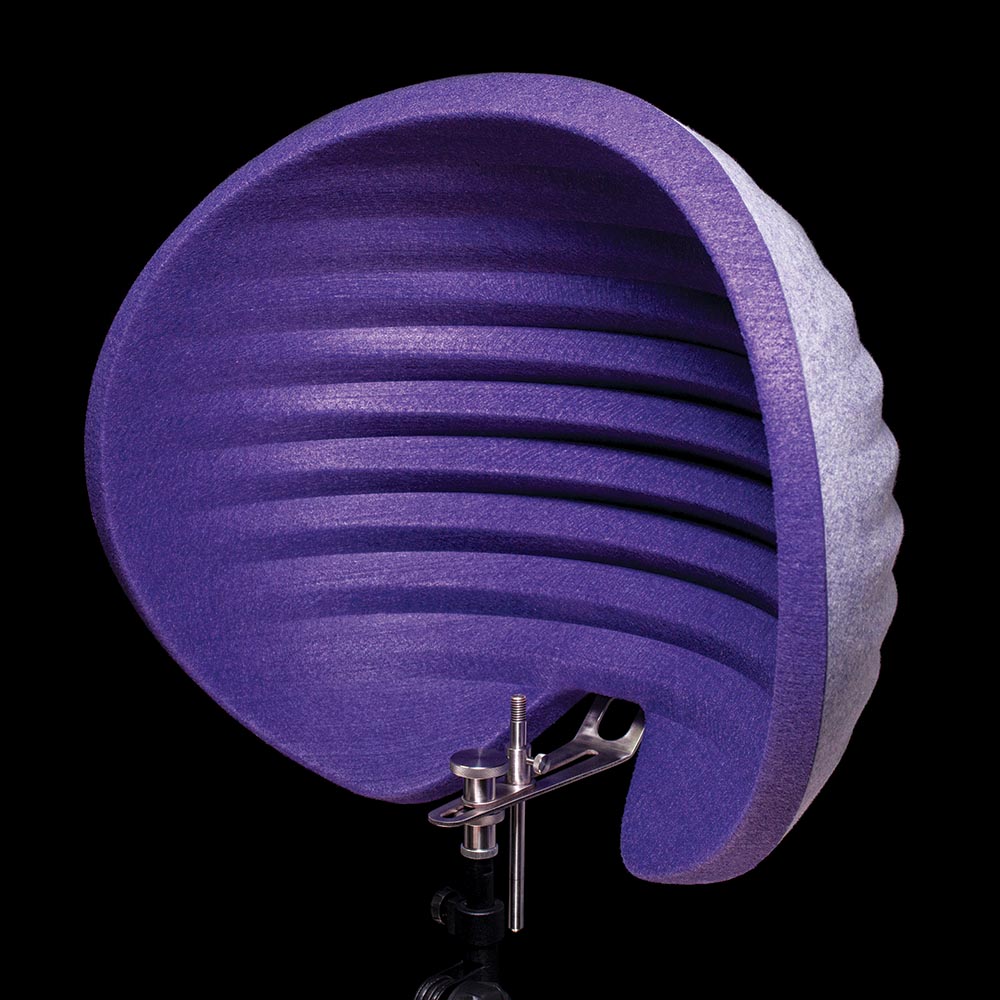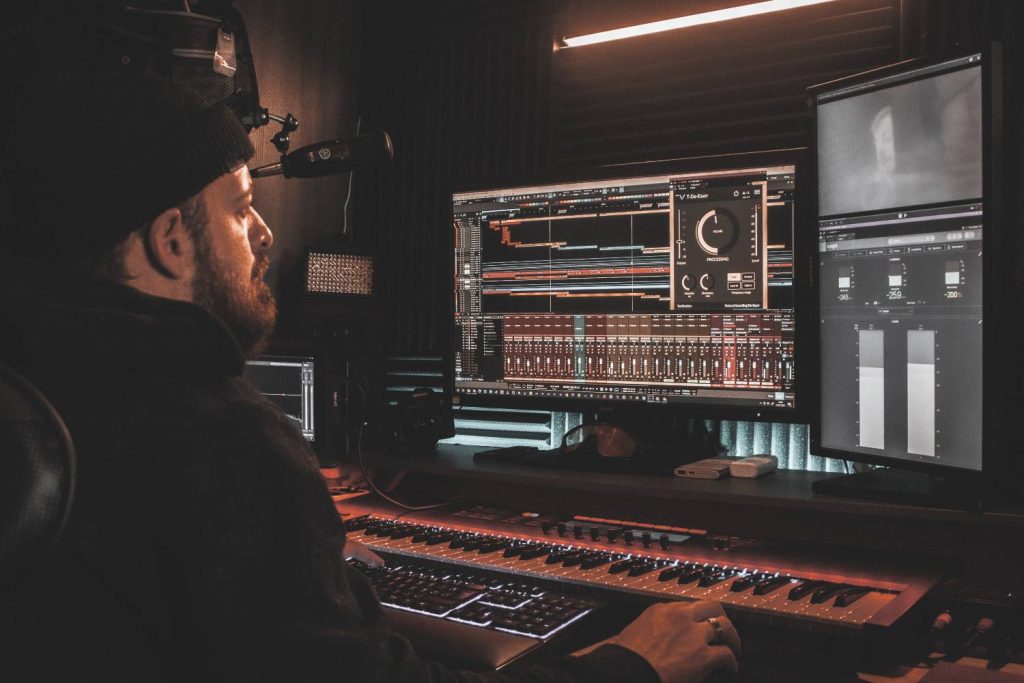How to affordably counteract unruly room influences on your capture
When I first started writing and reviewing gear, some 15 years ago, the word ‘studio’ had a very defined meaning and aesthetic. Big consoles, expansive mic lockers, but perhaps most importantly – a professional approach to soundproofing and acoustic treatment.
Alas, the last 15 years in particular have seen the very nature of the recording studio change in some pretty profound ways. No longer just a prospect for the top end of town, the emergence of DAW recording and the maturation of the home studio market has seen the normalisation of high-end, critical audio gear in the home and project studio. We are seeing better preamps, better conversion, better microphones, better monitoring etc. as aspiring engineers veer closer and closer into commercial studio territory in regards to their taste in gear.
Read all the latest features, columns and more here.
Unfortunately, while the hardware and software employed by this sector of the market is becoming increasingly more expensive and technologically sophisticated, the proverbial elephant in the room is ironically enough, the room itself, or more specifically, the tendency for home recordists to leave their recording space untreated and uncalibrated and the perfect storm that arises when combining this with super responsive, extremely critical recording gear.
This is a two-part problem and one that companies like Aston Microphones have looked to solve at both the acoustic, and electro-acoustic end with products like their award-winning Stealth microphone and Halo reflection filter.
For most beginner engineers, there lies a temptation to splurge on the most expensive, or most famous microphone, as a sort of band-aid solution to level up their recording quality, but in most cases this is putting the cart before the horse.
Obviously, the delicate nature of a premium condenser microphone is ideal for capturing everything in an immaculately designed, acoustically controlled studio environment, but for most of us this simply isn’t feasible. Things like room modes, standing waves, flutter echo, and low frequency build up can all quickly wreak havoc on our audio quality, not to mention cost tens of thousands of dollars to rectify, and the kind of treatment required is often in breach of most residential leases. It’s a problem as old as time for home studios.
So, if we can’t fix the room, our first point of call should be to at least select a microphone that is as flattering as possible to our untreated space, rather than one that captures its inherent shittiness in crisp high definition.
Using an extremely responsive condenser in this environment, will only serve to highlight the failings of the room’s acoustic treatment and this is why studio-quality, large diaphragm dynamic mics like Aston’s Stealth are so perfect for the modern recording zeitgeist. They work with you rather than against you, providing just the right amount of vaseline on the lens, to keep your capture looking pretty.
The Stealth in particular is a great design for a multitude of different reasons. For starters, it offers four different voicings, including two vocal settings, a guitar setting, and one simply called ‘dark’, which instantly make it one of the most versatile mics out there. The vocal modes allow you to find a tone that works best with your specific voice, while the guitar mode brings out the bright twang of the strings on both acoustic and electric guitars. The dark setting is reminiscent of a vintage ribbon microphone and delivers a lush warmth that sounds like it’s coming from a microphone of ten times the price tag.
It’s worth noting that these voice settings aren’t just EQ filters either, they’re intricate (one would assume passive) contour networks with their own pure signal paths, which really goes to show just how dedicated Aston are in their dedication at finding modern solutions to modern acoustic issues.
Whereas historically, most large diaphragm dynamic mics tend to be voice-specific (occasionally finding their way onto other high SPL sources like kick and bass cab), the Stealth is so versatile that it can be both a first choice critical vocal mic and a first choice for critical instrument miking at the same time. What you are left with is a hybrid mic, that has essentially the same ambient rejection and SPL qualities of the famous broadcast dynamic mics, nut with enough clarity in the top and adjustability in regards to how it responds to distance, to really cater a sound to your specific application or room. Mind bending stuff.
How does it pull this off? Well like an electro-acoustic amphibian, the Stealth has the nifty ability of operating as both a passive and active mic, meaning you have varying choices in sensitivity and response, depending on the acoustic environment and intended application, something which plays right into this idea of playing to the strengths of our space. By selecting the right voice setting for our space, you can bypass a whole host of potential acoustic nasties in one simple step, instantly improving our capture and intelligibility.
Another area in which the Stealth excels, is in its remarkably low self noise, a trait which no doubt lends itself to recording in less than ideal acoustic environments. When we factor in all the computer fan-noise, ambient artefacts, truck rumble, room modes, dirty power, dogs barking, and the like, all things that are liable to sabotage our pristine audio, the last thing we want is a buildup of noise from the mic itself sitting atop this murderers row of ambient and acoustic issues.
As mentioned before, the modern recording dilemma is a two-part problem requiring a two-stage solution, and that is where mobile room treatment comes into play.
Controlling a room’s acoustic characteristics can be a tough game, especially when a room’s design was never intended to help in this matter. Hard surfaces, standing waves, environmental noise, and a host of other problems come into play when setting up a microphone to record vocals or instruments in the home or mobile studio environment.
Even just at the logistical end, you are dealing with a lot of square meterage, between the walls, the ceiling and the floor, considerations that only become more difficult when we are talking about non-rectangular spaces, tiered ceilings, and non-parallel surfaces. Even then, a lot of this needs to be permanently installed or flown from the ceiling, which is laboursome, expensive, and above all else, extremely immobile.
Traditionally, project studio owners rectified this via the use of specially treated vocal booths, to provide separation and minimise reflections on what has traditionally been the most important instrument in the mix. For the average home recordist, even a vocal booth is probably too much infrastructure for civilian use, but that doesn’t mean we cant use this concept of artificially ‘bringing in the size of the room’ and using some isolation to filter out as many acoustic issues as possible before they make it to the mic.
Enter the Stealth’s partner in crime, the Aston Halo reflection filter.
Taking in the considerations of all angles around the microphone, this lightweight, extremely mobile reflection filter is mounted directly onto your microphone stand with the microphone mounted within it to create a miniature studio space around your microphone’s capsule. Think of it as a tiny room within a room.
The ribbed diffusers along Halo’s surface take care of unwanted reflections from the space itself, just as a series of larger diffusers in a professional recording studio would, which combined with the Stealth’s optimised capture and throw, work in unison to pull some of the best audio out there from less-than-ideal acoustic environments.
The Aston Halo has a spread that covers not only the sides, but above and below the microphone as well, counteracting the effects of a hard floor or ceiling surface in the room, reflections that tend to be left attenuated when working with gobos and baffles. This is particularly handy because let’s face it, these are the two surfaces most likely to be perfectly parallel with one another, exactly what you don’t want ping-ponging around your microphone.
You only need to place your head in the space where the microphone would sit and you can instantly hear just how effective this device works in blocking out acoustic reflections.
The room goes quiet, and your voice becomes strangely dry as the reflections we are so used to hearing in everyday life just melt away. It’s kind of revelatory in letting you hear just how much unnecessary noise we put up with unknowingly. Now, adjusting the space in which our microphone sits instantly puts us most of the way there, just with the addition of the Aston Halo and no other work. Placing your computer and any other noise sources, like a window to the rear of the Aston Halo allows it to further reduce the room noise, such is the quality of its off-axis rejection.
The other obvious advantage of something like the Halo is its portability and consistency. In many ways, a home studio is not too far from a mobile studio in that it moves about its own space and gradually from room to room, or house to house as needs and living situations develop. What the Halo does that is so unique in the context of mobile recording, is that it provides a similar consistency from room to room, counteracting the impact of the acoustic environment itself and serving as a perfect solution for the ever changing nature of your living situation.
This isolation, uniquely housed inside the Halo’s design works in tandem with the already excellent side rejection response offered by the Stealth, meaning you can achieve a very isolated source signal in just about any space and maintain a relatively similar capture from one recording environment to the next.
One of the biggest caveats of the ‘Home Studio’ is that it is primarily a ‘Home’ first and a ‘Studio’ second and this is one of the biggest challenges when trying to pull professional quality capture from a space that was never intended with that purpose in mind.
Part of being a studio engineer is having a handle on things like room acoustics and ambient reflections – after all, in a well-treated space, the sound of the room is more often than not a desirable element of the overall capture.
Unfortunately, this isn’t the reality for most home recordists and thus, isn’t always the first thing on most beginner engineers’ minds when it comes to selecting gear or when deciding on how to invest their hard earned. Thankfully something like the Aston Stealth microphone and Aston Halo reflection filter mean you can counteract the influence of the room on the cheap, while simultaneously serving as a perfect introduction to the mindset of thinking about microphones in the open air, from the inside looking out.

Head to Aston Microphones for more information on the Aston Halo. For local enquiries, reach out to Australis Music.







